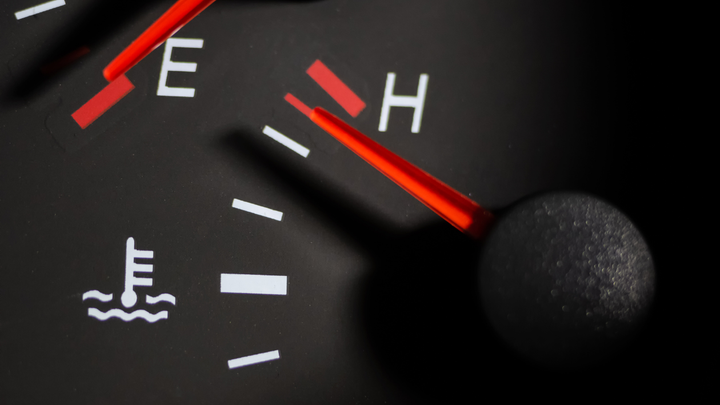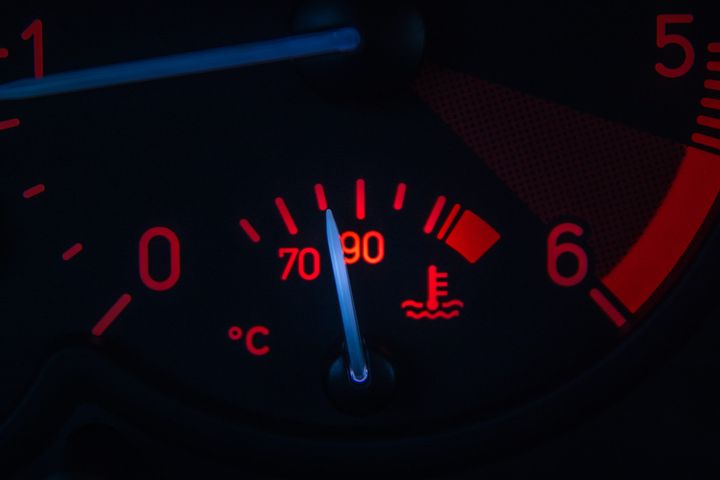


Proper engine temperature regulation is essential for efficient combustion, reduced emissions, and overall engine health. The cooling system is designed to maintain the engine's operating temperature within an optimal range by circulating coolant and dissipating excess heat through the radiator. However, when the cooling system malfunctions, it can lead to intermittent temperature spikes, where the engine temporarily overheats before cooling down and returning to normal temperatures. This cyclical pattern of overheating and cooling can be indicative of various underlying issues that require prompt diagnosis and repair to prevent potential engine damage.

Engine temperature spikes that temporarily overheat the engine before returning to normal can be attributed to several common causes related to the cooling system components and their functionality.
The thermostat is a crucial component that regulates the flow of coolant between the engine and the radiator based on temperature. A stuck-open thermostat can cause excessive coolant circulation, leading to an initial temperature spike before the system stabilizes. Conversely, a stuck-closed thermostat restricts coolant flow, resulting in overheating and subsequent cooling as the thermostat eventually opens.
Insufficient coolant levels can impair the cooling system's ability to effectively dissipate heat from the engine. Coolant leaks or inadequate refilling can lead to temporary overheating until the remaining coolant circulates and brings the temperature down, only for the cycle to repeat as the coolant level drops again.
The radiator fan plays a crucial role in drawing air through the radiator to facilitate heat dissipation from the coolant. A faulty fan motor, broken fan blades, or electrical or relay problems can prevent the fan from operating correctly, causing the engine to overheat initially before the remaining airflow cools it down.
The water pump is responsible for circulating the coolant through the engine and radiator. Impeller damage, bearing failure, leaks, or cavitation can impede proper coolant flow, leading to temporary overheating until the remaining circulation allows for cooling and normalization.
Air pockets or airlocks trapped within the cooling system can restrict coolant flow, causing localized overheating and temperature spikes before the air bleeds out and allows for proper circulation and cooling.
A malfunctioning engine coolant temperature sensor can provide inaccurate readings, causing the cooling system to operate incorrectly. This can result in temperature spikes and fluctuations as the system struggles to regulate the temperature based on faulty data.

Engine temperature spikes that return to normal can manifest in various symptoms and potentially lead to severe consequences if left unaddressed.
The most obvious symptom is the engine temperature gauge or warning light indicating a temporary spike in temperature, followed by a return to normal operating levels. This cyclical pattern of overheating and cooling can be a clear indication of an underlying cooling system issue.
Prolonged or severe temperature spikes can lead to significant engine damage. Overheating can cause cylinder head gasket failure, warped cylinder heads or engine blocks, and even seized engine components, resulting in costly repairs or potential engine replacement.
Table 1: Potential Engine Damage from Overheating
Damage Type
Description
Cylinder Head Gasket Failure
Excessive heat can cause the gasket to blow, leading to coolant leaks and potential engine damage.
Warped Cylinder Heads/Engine Block
High temperatures can cause metal components to warp or distort, affecting engine performance and sealing.
Seized Engine Components
Extreme heat can cause metal parts to expand and seize, leading to complete engine failure.
Even temporary overheating can negatively impact engine performance. It can lead to a loss of power, increased fuel consumption, and emission issues, as the engine struggles to operate efficiently under excessive heat conditions.
Identifying the root cause of engine temperature spikes requires a systematic approach and various diagnostic methods.
A thorough visual inspection of the cooling system can reveal potential issues. This includes checking the coolant level and condition, looking for leaks or damage, and ensuring the proper functionality of components like the radiator fan and water pump.
Pressure testing the cooling system can help detect leaks, assess the thermostat's operation, and identify any blockages or restrictions that may be causing temperature fluctuations.
Flow testing involves evaluating the coolant circulation and water pump performance to identify any restrictions or blockages that could impede proper coolant flow and heat dissipation.
Monitoring the engine coolant temperature sensor readings and observing the cooling system's operation can provide valuable insights into temperature patterns and potential component failures.
Once the root cause of the temperature spikes has been identified, appropriate repair and maintenance solutions can be implemented.
Faulty components like the thermostat, radiator fan, water pump, or temperature sensor may need to be replaced to restore proper cooling system functionality.
Table 2: Common Cooling System Component Replacements
Component
Replacement Reasons
Thermostat
Stuck open or closed, causing temperature regulation issues
Radiator Fan
Faulty motor, broken blades, or electrical problems
Water Pump
Impeller damage, bearing failure, leaks, or cavitation
Temperature Sensor
Inaccurate temperature readings
Coolant system maintenance may involve refilling or flushing the coolant, bleeding air from the system, repairing leaks, and replacing worn hoses or belts.
List 1: Coolant System Maintenance Tasks
Coolant refill or flush
Air bleeding
Leak repair
Hose replacement
Belt replacement
Regular preventive measures can help mitigate the risk of engine temperature spikes. These include:
Checking coolant levels regularly and topping up as needed
Periodic cooling system inspections to identify potential issues early
Timely replacement of worn or failing components
Using the proper coolant mixture and additives recommended for your vehicle
List 2: Preventive Measures for Temperature Spikes
Regular coolant level checks
Periodic cooling system inspections
Timely component replacements
Proper coolant mixture and additives
Engine temperature spikes that temporarily overheat and then return to normal can be indicative of various cooling system issues. Promptly diagnosing and addressing the root cause is crucial to prevent potential engine damage, performance degradation, and costly repairs. Regular cooling system maintenance, component inspections, and timely repairs can help ensure optimal temperature regulation and extend the lifespan of your vehicle's engine. If you encounter persistent or severe temperature fluctuations, it is advisable to seek professional assistance from a qualified mechanic for a thorough diagnosis and repair.
Common signs include the temperature gauge reading higher than normal when driving, coolant leaks around the thermostat housing, and the upper radiator hose not getting hot.
Look for coolant puddles under the vehicle when parked and inspect all cooling system components and hoses for any wetness or stains.
The radiator fan helps draw air through the radiator to cool down the hot coolant from the engine. A faulty fan can lead to overheating issues.
Air can get trapped when replacing coolant or components like the water pump, thermostat or radiator. Proper bleeding is required to remove air pockets.
Signs of a failing water pump include coolant leaks around the pump, whining noises, and inadequate coolant flow through the system.
Yes, running an engine with very low coolant levels for too long can potentially lead to overheating and permanent cylinder head gasket or engine component damage.
The proper coolant mixture is designed for your vehicle's operating temperatures and materials. Using the wrong coolant can cause corrosion or cooling system failure.
Most manufacturers recommend flushing and replacing the coolant every 30,000 to 50,000 miles or every few years to remove contaminants.
A faulty temperature sensor can cause erratic temperature gauge readings, the engine overheating or running too cool, and the cooling fans operating incorrectly.
Yes, some cooling system problems like air pockets or partially clogged passages can cause the engine to temporarily overheat before cooling back down, leading to intermittent overheating.

Miguel started tinkering with car radios as a teenager, fascinated by the intricate dance of wires and circuits. This passion led him to pursue a career as an automotive electrician. For the past 10 years, Miguel has tackled everything from flickering headlights to mysterious electrical gremlins. He thrives on troubleshooting electrical problems and enjoys sharing his knowledge to empower car owners to understand their vehicles better.








